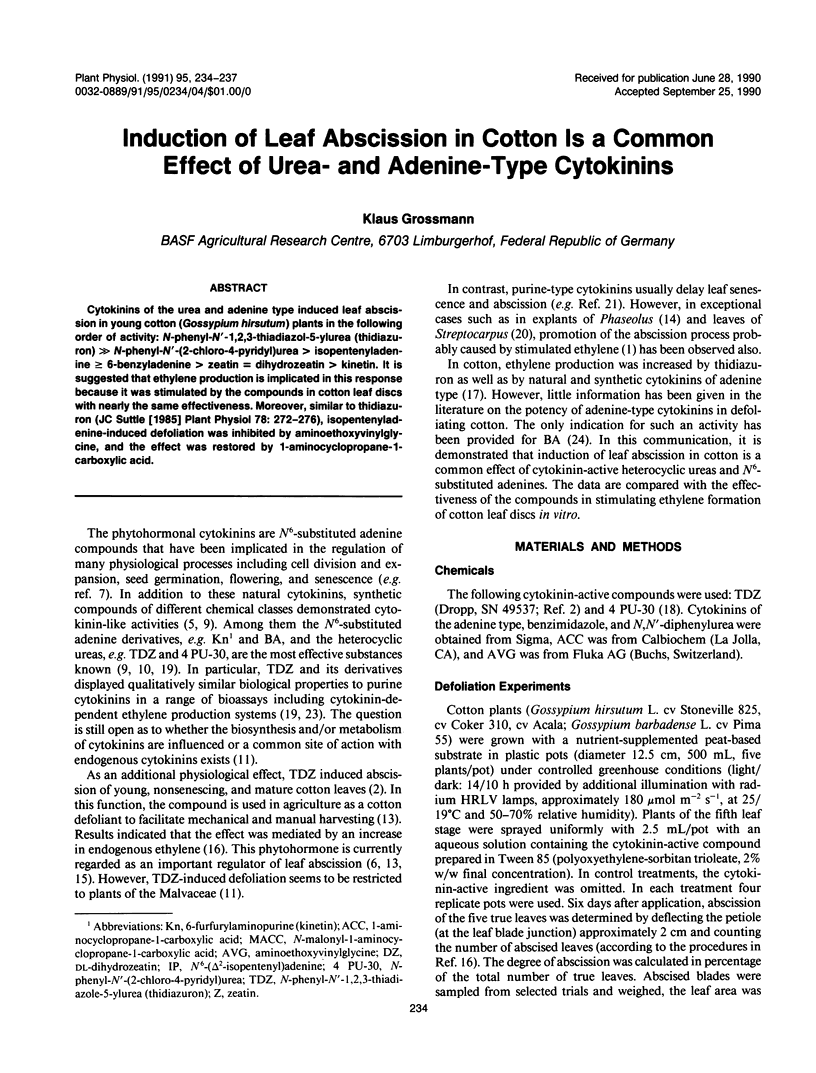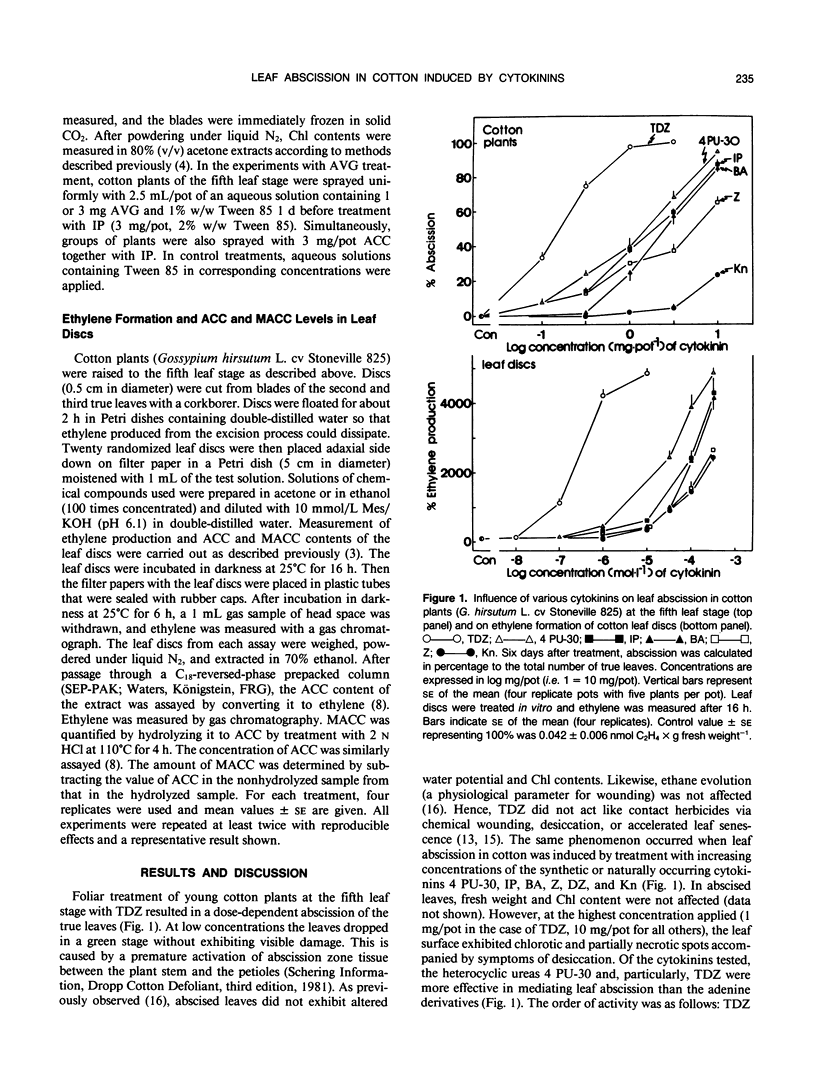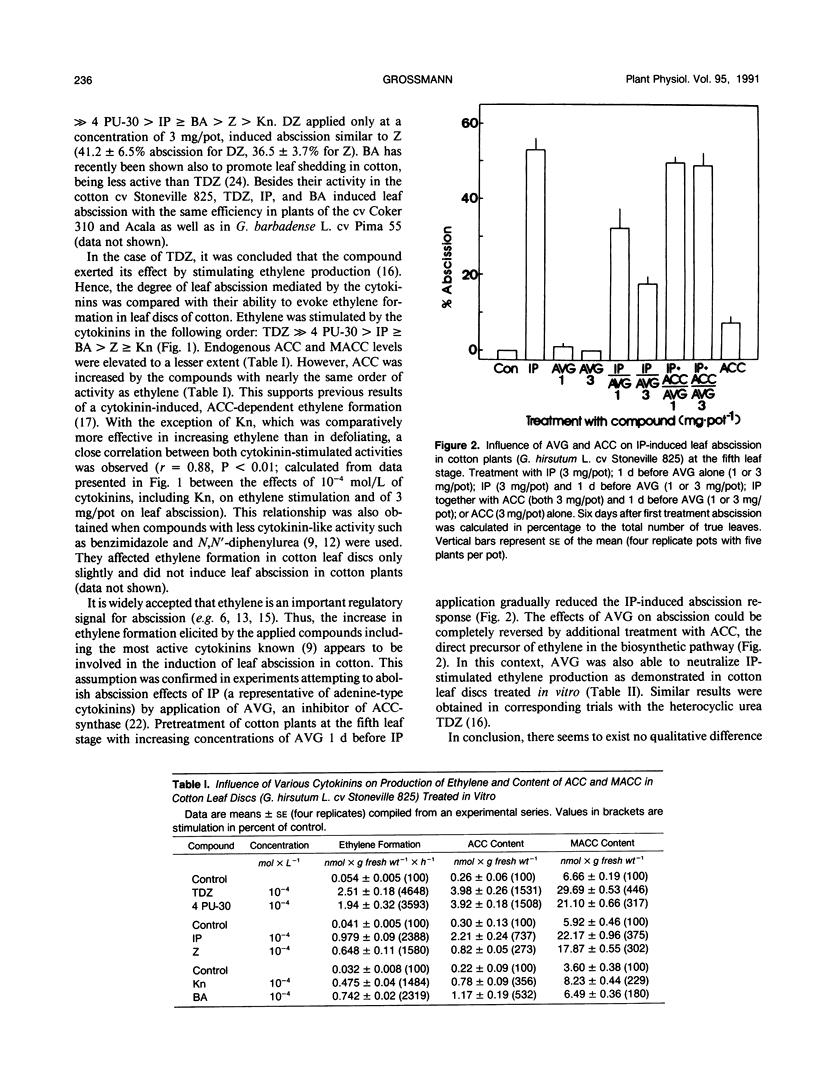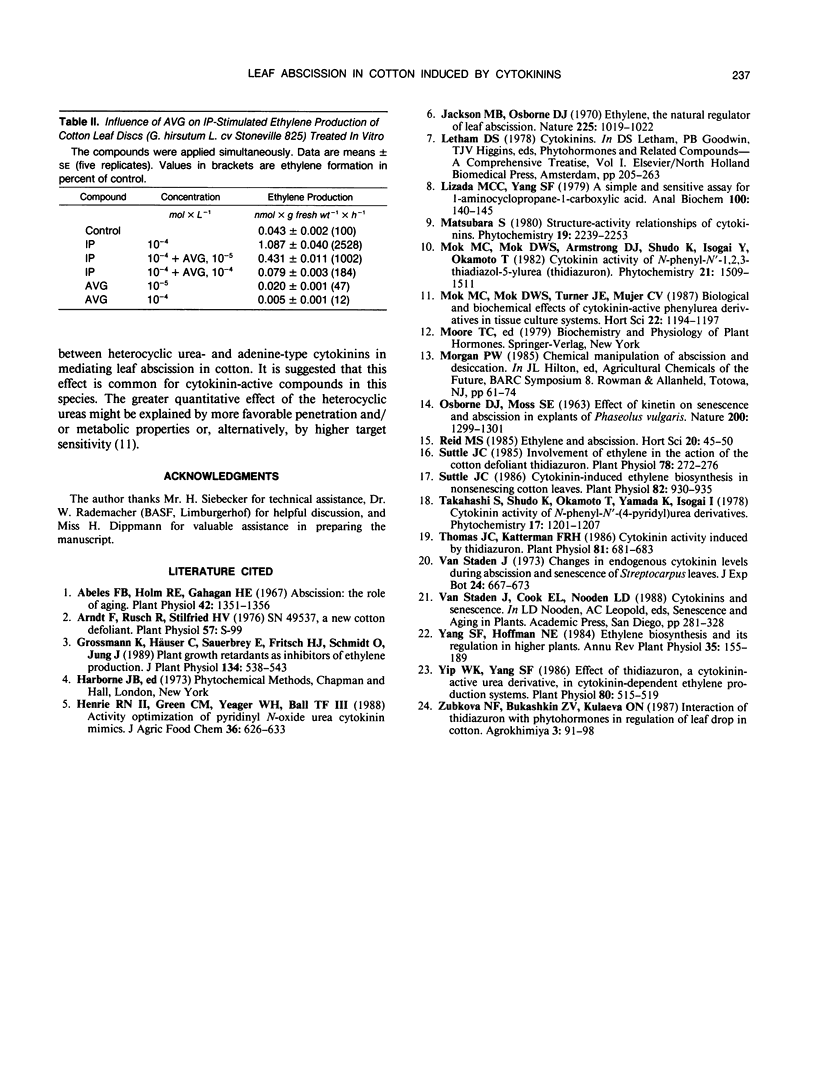Abstract
Cytokinins of the urea and adenine type induced leaf abscission in young cotton (Gossypium hirsutum) plants in the following order of activity: N-phenyl-N′-1,2,3-thiadiazol-5-ylurea (thidiazuron) » N-phenyl-N′-(2-chloro-4-pyridyl)urea > isopentenyladenine ≥ 6-benzyladenine > zeatin = dihydrozeatin > kinetin. It is suggested that ethylene production is implicated in this response because it was stimulated by the compounds in cotton leaf discs with nearly the same effectiveness. Moreover, similar to thidiazuron (JC Suttle [1985] Plant Physiol 78: 272-276), isopentenyladenine-induced defoliation was inhibited by aminoethoxyvinylglycine, and the effect was restored by 1-aminocyclopropane-1-carboxylic acid.
Full text
PDF



Selected References
These references are in PubMed. This may not be the complete list of references from this article.
- Abeles F. B., Holm R. E., Gahagan H. E. Abscission: the role of aging. Plant Physiol. 1967 Oct;42(10):1351–1356. doi: 10.1104/pp.42.10.1351. [DOI] [PMC free article] [PubMed] [Google Scholar]
- Jackson A. O., Larkins B. A. Influence of Ionic Strength, pH, and Chelation of Divalent Metals on Isolation of Polyribosomes from Tobacco Leaves. Plant Physiol. 1976 Jan;57(1):5–10. doi: 10.1104/pp.57.1.5. [DOI] [PMC free article] [PubMed] [Google Scholar]
- Jackson M. B., Osborne D. J. Ethylene, the natural regulator of leaf abscission. Nature. 1970 Mar 14;225(5237):1019–1022. doi: 10.1038/2251019a0. [DOI] [PubMed] [Google Scholar]
- Lizada M. C., Yang S. F. A simple and sensitive assay for 1-aminocyclopropane-1-carboxylic acid. Anal Biochem. 1979 Nov 15;100(1):140–145. doi: 10.1016/0003-2697(79)90123-4. [DOI] [PubMed] [Google Scholar]
- Suttle J. C. Cytokinin-induced ethylene biosynthesis in nonsenescing cotton leaves. Plant Physiol. 1986 Dec;82(4):930–935. doi: 10.1104/pp.82.4.930. [DOI] [PMC free article] [PubMed] [Google Scholar]
- Suttle J. C. Involvement of ethylene in the action of the cotton defoliant thidiazuron. Plant Physiol. 1985 Jun;78(2):272–276. doi: 10.1104/pp.78.2.272. [DOI] [PMC free article] [PubMed] [Google Scholar]
- Thomas J. C., Katterman F. R. Cytokinin activity induced by thidiazuron. Plant Physiol. 1986 Jun;81(2):681–683. doi: 10.1104/pp.81.2.681. [DOI] [PMC free article] [PubMed] [Google Scholar]
- Yip W. K., Yang S. F. Effect of thidiazuron, a cytokinin-active urea derivative, in cytokinin-dependent ethylene production systems. Plant Physiol. 1986 Feb;80(2):515–519. doi: 10.1104/pp.80.2.515. [DOI] [PMC free article] [PubMed] [Google Scholar]


